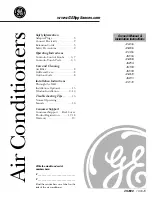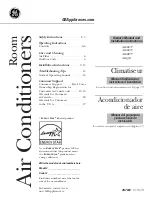
Page 10
Safety
Respiratory system protection
Storage
Protective clothing
Accidental release measures
Disposal
Fire fighting information
Cylinders
Protective fire fighting
equipment
If you are in doubt about the concentration in the atmosphere, it is rec-
ommended to wear a respirator approved by an accident-prevention
Authority, of the independent or oxygen type.
Cylinders must be stored in a dry and fresh place, free from any fire
hazard, far from direct sunlight or other sources of heat, radiators etc.
Keep a temperature below 45°C.
Wear overalls, protective gloves and goggles or a mask.
It is important to wear protective clothing and a respirator. Stop the
source of the leak, if you can do this without danger. Negligible leaks
can be left evaporating under the sun, providing that the room is well
ventilated. Considerable leaks: ventilate the room. Reduce the leak with
sand, earth or other absorbing substances. Make sure that the liquid
does is not channelled into gutters, sewers or pits where the vapours
are likely to create a stuffy atmosphere.
The best method is recovery and recycling. If this method is not practi-
cable, dispose according to an approved procedure, that shall ensure
the absorption and neutralization of acids and toxic agents.
R407C, R134a: Not flammable in the atmosphere.
In case of fire, wear an independent respirator and protective clothing.
The cylinders, if exposed to fire, shall be cooled by water jets; other-
wise, if heated, they may explode.
General precautions
Do not inhale concentrated vapours. Their concentration in the atmos-
phere should not exceed the minimum preset values and should be
maintained below the professional threshold. Being more weighty than
the air, the vapour concentrates on the bottom, in narrow areas. There-
fore, the exhaust system must work at low level.
Manuale VLS-VLH1 17-06-2005 9:04 Pagina 10












































